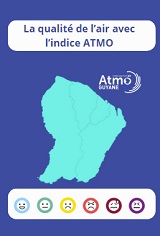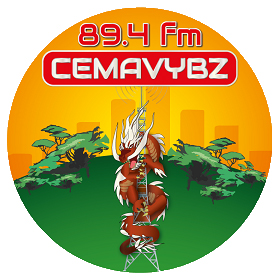Blada.com
lundi 30 juin
Boîtes aux lettres
Courrier des lecteurs
Petites annonces
Emploi / Formation
Covoiturage
Infos citoyennes
Infos citoyennes
28/11/22
Anton Kommessi, premier patient à être transféré d’hôpital de Saint-Laurent à d’Albina
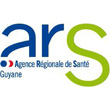 Après l’essai mené la semaine dernière, un patient surinamais a été transféré cette semaine entre l’hôpital de Saint-Laurent du Maroni et celui d’Albina. Pris en charge côté français depuis octobre, il restera en observation côté surinamais, dans l’attente de résultats d’examens. Sa prise en charge au Chog pourra reprendre dans une dizaine de jours, quand ils seront connus. De tels transferts, prévus au rythme d’un par semaine, permettent au Chog de libérer des lits d’hospitalisation, à l’hôpital d’Albina d’accueillir de premiers patients, et aux patients surinamais de recevoir plus facilement de la visite et d’échanger avec des soignants parlant tous leur langue
Après l’essai mené la semaine dernière, un patient surinamais a été transféré cette semaine entre l’hôpital de Saint-Laurent du Maroni et celui d’Albina. Pris en charge côté français depuis octobre, il restera en observation côté surinamais, dans l’attente de résultats d’examens. Sa prise en charge au Chog pourra reprendre dans une dizaine de jours, quand ils seront connus. De tels transferts, prévus au rythme d’un par semaine, permettent au Chog de libérer des lits d’hospitalisation, à l’hôpital d’Albina d’accueillir de premiers patients, et aux patients surinamais de recevoir plus facilement de la visite et d’échanger avec des soignants parlant tous leur langue
Il est 9h30. Sylvan Kommessi, qui partage sa vie entre Paramaribo et Saint-Laurent du Maroni, a rejoint son père, hospitalisé au premier étage du service de médecine, au centre hospitalier de l’Ouest guyanais (Chog). L’occasion de voir comment il va et de lui dire quelques mots, avant le transfert de son père à l’hôpital d’Albina, de l’autre côté du Maroni. Après l’essai effectué avec succès la semaine dernière, Anton Kommessi est le premier « vrai » patient transféré entre les deux hôpitaux. Cette organisation est désormais possible, entre les deux établissements, pour des patients surinamais pris en charge au Chog et stabilisé, afin qu’ils terminent leur hospitalisation côté Suriname. Ou, dans le cas d’Anton Kommessi, pour y être gardés sous surveillance médicale, avant la reprise de la prise en charge à Saint-Laurent du Maroni. Pour le Chog, le principal intérêt est de libérer des lits d’hospitalisation occupés par des patients qui n’en ont plus besoin ; pour l’hôpital d’Albina, c’est de commencer à avoir une activité, après être resté vide pendant des années ; pour les patients surinamais, c’est de pouvoir recevoir plus facilement la visite de leur famille et de pouvoir échanger dans leur langue avec les soignants.
En ce mardi matin, les ambulanciers et brancardiers ont pris place autour du patient. Ils transportent le quinquagénaire jusqu’à une ambulance de l’hôpital. Puis se dirigent vers le bac international, au bord du fleuve. Au poste de police aux frontières (PAF), surprise ! Un cortège d’une soixantaine de motards attend de traverser le fleuve pour rejoindre un rassemblement d’amateurs de deux-roues à Paramaribo. L’accord trouvé avec les autorités françaises et surinamaises permet de passer devant tout le monde : de tels transferts de patients sont envisagés toutes les semaines. Les modalités d’entrée et de sortie des deux territoires ont donc été discutées en amont, pour éviter que les transferts ne soient retardés par les formalités administratives.
« Les médecins nous ont apporté beaucoup de garanties »

De l’autre côté du fleuve, l’ambulance reprend sa route. Sur la voie de gauche. Les problèmes d’assurance ont été réglés en amont. A la sortie d’Albina, elle bifurque sur le parking de l’hôpital Marwina. Il est accueilli par le Dr Morantes, un médecin interniste vénézuélien, qui travaille dans l’établissement avec trois autres médecins et neuf infirmiers. Avec ses homologues du Chog, il vérifie le dossier du patient, établi en trois langues : français, néerlandais et anglais. « Pour nous, c’est important. Il s’agit de pouvoir s’entraider entre les deux hôpitaux. Pour certaines familles qui vivent à Paramaribo, voire plus loin, cela simplifiera les visites. Le but est que les patients soient rapidement remis sur pied et puissent rentrer chez eux », explique-t-il dans ce reportage de Guyane la 1ère, diffusé en ouverture du JT de mardi soir.
Ce ne sera pas le cas pour Anton Kommessi : les médecins du Chog sont dans l’attente de résultats d’examen avant de pouvoir poursuivre sa prise en charge. Ils ne seront connus qu’en fin de semaine prochaine. Un second transfert, dans l’autre sens, est donc d’ores et déjà prévu. « Cela montre que les transferts peuvent se faire dans les deux sens, qu’en cas de besoin, un patient transféré à Albina peut revenir au Chog, explique le Dr Fredrik Terlutter, médecin coordinateur du GHT et chargé de la coopération à l’hôpital de Saint-Laurent du Maroni. Dans le cas de ce patient, aucune prise en charge ne peut se faire tant que l’on n’a pas ses résultats. Nous n’avions donc pas d’utilité à le garder à l’hôpital. Mais comme il habite à Paramaribo, un retour à domicile se révélait compliqué. Nous avons donc opté pour cette solution de l’hôpital d’Albina. »
Le Chog et l’hôpital d’Albina ont prévu d’opérer un transfert par semaine. Le Chog paie les frais d'hospitalisation à Albina, à un coût très inférieur à une hospitalisation côté guyanais. Selon le Dr Morantes, il lui sera possible d’accueillir jusqu’à dix patients simultanément. Sylvan Kommessi, le fils resté à Saint-Laurent, se réjouit de ce transfert : « Les médecins nous ont apporté beaucoup de garanties. On sent une bonne coopération entre la Guyane et le Suriname. »
 After the trial conducted last week, a Surinamese patient was transferred this week between the Saint-Laurent du Maroni hospital and that of Albina. Supported on the French side since October, he will remain under observation on the Surinamese side , pending test results. His care at the Chog may resume in ten days, when they are known. Such transfers, planned at the rate of one per week, allow the Chog to free up hospital beds, the Albina hospital to receive the first patients, and Surinamese patients to more easily receive visits and to exchange with caregivers who all speak their language
After the trial conducted last week, a Surinamese patient was transferred this week between the Saint-Laurent du Maroni hospital and that of Albina. Supported on the French side since October, he will remain under observation on the Surinamese side , pending test results. His care at the Chog may resume in ten days, when they are known. Such transfers, planned at the rate of one per week, allow the Chog to free up hospital beds, the Albina hospital to receive the first patients, and Surinamese patients to more easily receive visits and to exchange with caregivers who all speak their language
It's 9:30. Sylvan Kommessi, who divides his life between Paramaribo and Saint-Laurent du Maroni, has joined his father, hospitalized on the first floor of the medical service, at the West Guyanese Hospital Center (Chog). The opportunity to see how he is and to say a few words to him, before his father is transferred to Albina hospital, on the other side of the Maroni. After the successful test last week, Anton Kommessi is the first “real” patient transferred between the two hospitals. This organization is now possible, between the two establishments, for Surinamese patients treated at the Chog and stabilized, so that they end their hospitalization on the Suriname side. Or, in the case of Anton Kommessi, to be kept there under medical supervision, before the resumption of care in Saint-Laurent du Maroni. For the Chog, the main interest is to free up hospital beds occupied by patients who no longer need them; for the Albina hospital, it is to start having an activity, after having remained empty for years ; for Surinamese patients, it is to be able to receive visits from their family more easily and to be able to communicate in their language with the caregivers.
On this Tuesday morning, the paramedics and stretcher-bearers took their places around the patient. They transport the 50-year-old to an ambulance from the hospital. Then head for the international ferry, by the river. At the border police station (PAF), surprise! A procession of around sixty motorcyclists is waiting to cross the river to join a gathering of two-wheeler enthusiasts in Paramaribo. The agreement reached with the French and Surinamese authorities makes it possible to go ahead of everyone: such patient transfers are planned every week. The procedures for entering and leaving the two territories have therefore been discussed in advance, to prevent transfers from being delayed by administrative formalities.
“The doctors gave us a lot of guarantees”

On the other side of the river, the ambulance continues on its way. On the left lane. Insurance issues have been resolved in advance. On leaving Albina, it forks into the Marwina hospital car park. He is welcomed by Dr. Morantes, a Venezuelan internist, who works in the establishment with three other doctors and nine nurses. With his Chog counterparts, he checks the patient's file, established in three languages: French, Dutch and English. “For us, it is important. It is about being able to help each other between the two hospitals. For some families who live in Paramaribo, or even further afield, this will simplify visits. The goal is for patients to be quickly back on their feet and able to return home,” he explains in this report of Guyane la 1ère, diffused in opening of the JT of Tuesday evening.
This will not be the case for Anton Kommessi: the Chog doctors are awaiting test results before they can continue his treatment. They will not be known until the end of next week. A second transfer, in the other direction, is therefore already planned. "This shows that transfers can be made in both directions, that if necessary, a patient transferred to Albina can return to the Chog, explains Dr. Fredrik Terlutter, coordinating doctor of the GHT and in charge of cooperation at the hospital of Saint-Laurent du Maroni. In the case of this patient, no care can be taken until we have his results. So we had no use keeping him in the hospital. But as he lives in Paramaribo, a return home was complicated. So we opted for this solution from Albina Hospital. »
The Chog and Albina Hospital have planned to operate one transfer per week. The Chog pays the hospitalization costs in Albina, at a much lower cost than hospitalization on the Guyanese side. According to Dr. Morantes, it will be possible for him to accommodate up to ten patients simultaneously. Sylvan Kommessi, the son who remained in Saint-Laurent, is delighted with this transfer: “The doctors gave us a lot of guarantees. We feel good cooperation between Guyana and Suriname.
Raccourcis


passer une petite annonce

passer une annonce de covoiturage


passer une annonce d’emploi

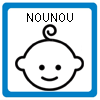
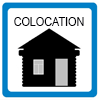
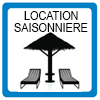

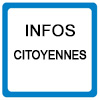

associations, postez vos actualités

participez au courrier des lecteurs
La Guyane c’est ici
La qualité de l’Air avec
ATMO
Photothèque

Lancements 2022
Vol 259 Ariane 5



